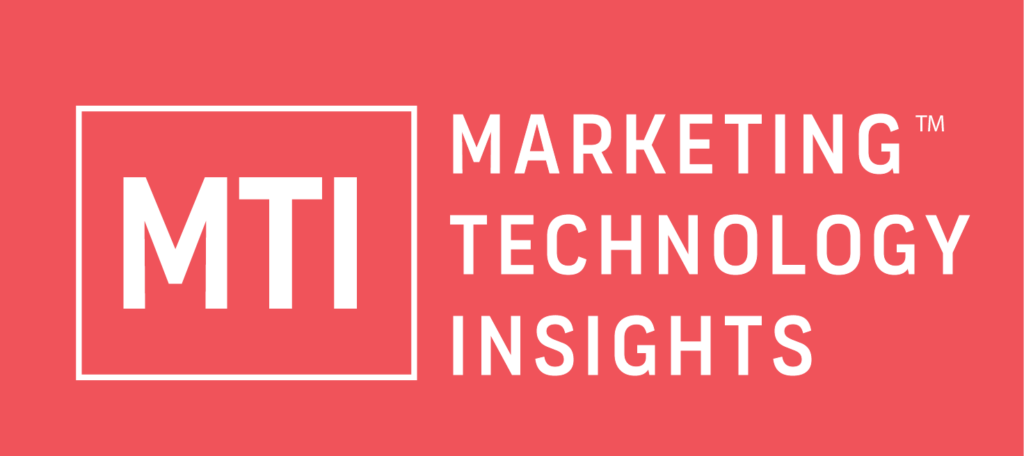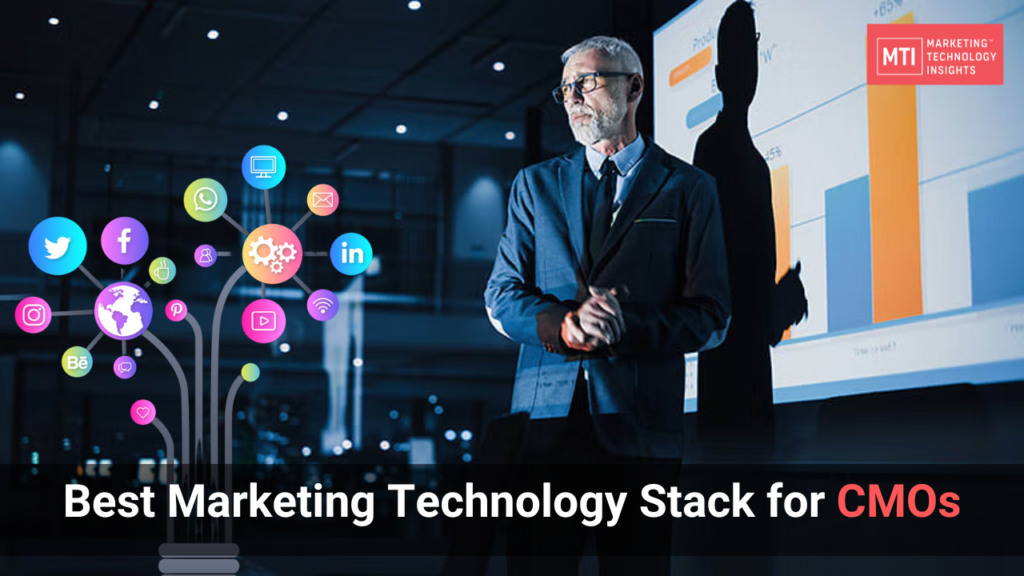When we talk about marketing technology stack for CMOs a critical decision often surfaces: whether to adopt a ‘best-of-breed’ or an ‘integrated suite’ approach when constructing the marketing technology stack. Each approach carries its advantages, and astute marketing leaders tailor their strategy based on their unique circumstances, shaping their martech roadmap and vendor selection accordingly.
Historically, survey data consistently pointed towards a growing preference for the best-of-breed approach in martech vendor selection. However, a notable shift occurred in 2020, with a clear inclination towards integrated suites. A substantial 59% of respondents expressed a preference for selecting marketing technologies through an integrated suite approach, relying predominantly on a single vendor offering interconnected capabilities to fulfill their diverse needs.
The Crucial Role of Marketing Technology
In a landscape driven by digital innovation, crafting a powerful Marketing Technology Stack for Chief Marketing Officers (CMOs) is imperative. The recent CMO Alliance report underscores the significance of strategic tool selection, with 50% of marketing managers identifying a CRM system as the linchpin for achieving growth objectives.
Prioritizing Growth with a Cohesive Marketing Technology Stack
According to the report, growth-oriented marketing managers prioritize CRM systems, closely followed by data analytics tools. While data modeling tools, email platforms, and LinkedIn Sales Navigator also feature prominently, the key lies in creating a cohesive whole. The interconnectivity of components ensures seamless collaboration and optimal performance.
Aligning Tools with Marketing Objectives
The central tenet of selecting tools is aligning them with specific marketing objectives. It’s not about having the latest features but about achieving strategic goals. If a tool doesn’t contribute to your objectives, it might be counterproductive. Master Marketing recommends a focus on five essential tool categories.
Essential Tools for a Robust Marketing Technology Stack
- CRM Software: Centralizing Sales and Contacts
A CRM system stands as the cornerstone, enabling centralized management of contacts and sales opportunities collaboratively. HubSpot, renowned for its effectiveness, offers a free solution to kickstart your CRM journey. - Collaboration and Communication Tools: Streamlining Marketing Efforts
Tools like Trello, Asana, and Evernote are indispensable for assigning tasks and coordinating marketing efforts. Seamless collaboration ensures efficient workflow management. - Email Marketing Tools: Adaptable and Automated Strategies
Email marketing remains a versatile strategy. Tools like MailChimp and Active Campaign empower marketers to manage databases and execute automated email campaigns, adapting to diverse brand needs and customer lifecycles. - Social Media Tools: Enhancing Social Presence
Efficient management of social channels is crucial. Hootsuite, Buffer, and BuzzSumo stand out for optimizing post scheduling and engagement, enhancing your brand’s social presence. - Analytics Tools: Informed Decision-Making
Analytics solutions, exemplified by Google Analytics, enable comprehensive measurement of campaign results. Informed decision-making becomes pivotal for refining and optimizing future marketing strategies.
Understanding the Anatomy of a Marketing Technology Stack
In an ideal world, a universal marketing technology stack would cater to all businesses, but the reality is that individuality matters. The choice between B2B and B2C operations significantly influences lead acquisition channels and required technologies. Nevertheless, certain technologies stand out as fundamental components, suitable for both B2B and B2C enterprises.
Breaking Down the Marketing Stack into Three Key Stages
When crafting an effective marketing technology stack for CMOs, it’s essential to consider foundational technologies that seamlessly cater to the needs of both B2B companies, such as Intercom, and B2C enterprises, including retailers or streaming services. To guide you through the process, we’ll categorize your marketing stack into three pivotal stages:
- Stage 1: Attract
- Stage 2: Engage
- Stage 3: Analyze and Optimize
While each stage comprises various sub-phases, we’ll focus on the three fundamental phases universally relevant to almost every business.
Marketing Technology Stack for CMOs:
Stage 1: Attract
- Google Ads – Ad Tech:
- A powerhouse for driving qualified traffic, Google Ads covers search, video, and display ads. It serves as an initial touchpoint for lead nurturing through strategies like remarketing, email marketing, and conversion optimization.
- Alternatives: AdRoll, Quantcast, Basis
- Demandbase – Ad Tech:
- Essential for Account-Based Marketing (ABM), Demandbase facilitates personalized online ads to specific individuals at targeted companies. This tool tailors messages based on predetermined criteria such as revenue, industry, and purchasing history.
- Alternatives: Terminus, RollWorks
- Unbounce – Landing Page Builder:
- Unbounce allows the creation of customized landing pages without coding, ensuring that the user journey remains seamless and leads are not lost. Powerful A/B testing capabilities refine messaging, design, and forms.
- Alternatives: Instapage, GetResponse, Knak
- Sprout Social – Social Media Management:
- Managing the entire social media strategy, Sprout Social streamlines publishing workflows and provides valuable insights. Integration with Intercom enhances the ability to attract and engage with the audience.
- Alternatives: Buffer, Sprinklr, Hootsuite, MeetEdgar, Later
- WordPress – CMS:
- Powering over 43% of websites, WordPress offers accessibility for building websites and blogs. Integrating with Intercom, it becomes a versatile CMS crucial for marketing efforts.
- Alternatives: Ghost, Medium, Drupal, Squarespace
- Ahrefs – SEO:
- A suite of SEO tools, Ahrefs aids in driving organic traffic by guiding keyword selection, content creation, and link-building strategies.
- Alternatives: SEMrush, Moz, Conductor, Siteimprove
- Zoom – Webinars:
- Zoom excels not only in one-on-one meetings but also as a webinar hosting tool, facilitating seamless integration with CRM systems.
- Alternatives: GoToMeeting, WebEx, Blue Jeans
- Wistia – Video Marketing:
- Wistia enhances video marketing efforts, allowing for better control and engagement compared to platforms like YouTube. Integration with Intercom ensures a centralized approach.
- Alternatives: Vidyard, Vimeo
- Uberflip – Content Marketing:
- Uberflip as a content experience platform organizes various content types into hubs, facilitating quicker access for prospects. This tool significantly improves the likelihood of turning prospects into qualified leads.
- Alternatives: Outgrow, Ion
- MadKudu – Lead Scoring:
- Ensuring lead quality, MadKudu goes beyond basic criteria, evaluating factors like predicted revenue, team size, tech stack, and more.
- Alternatives: Salespanel, Infer, ActiveCampaign
Stage 2: Engage
- Intercom – Customer Engagement and Lead Generation:
- Serving as the backbone of the martech stack, Intercom enables targeted messages, chatbots for lead qualification, and comprehensive tracking of customer data.
- Alternatives: None
- Clearbit – Data Enrichment:
- Clearbit Reveal helps de-anonymize website traffic, providing valuable insights into the industry, location, and technologies used by visitors.
- Alternatives: ZoomInfo, LinkedIn Sales Navigator, Cognism
- Marketo – Marketing Automation:
- Marketo, a powerful marketing automation tool, facilitates personalized campaigns, prospect identification, and customer connection at scale.
- Alternatives: Pardot, Eloqua
- HubSpot – Marketing Automation:
- With a broad platform covering advertising, blogging, SEO, email, and more, HubSpot is a popular choice for small businesses. Integration with Intercom ensures seamless data sync.
- Alternatives: Marketo, Pardot
- Dotdigital – Marketing Automation:
- Dotdigital’s cross-channel marketing platform focuses on personalized communication through email, SMS, landing pages, live chat, and social & search retargeting.
- Alternatives: Marketo Engage, HubSpot
- ActiveCampaign – Customer Experience Automation:
- ActiveCampaign streamlines follow-up and outreach strategies through extensive customer experience automation, primarily focusing on email campaigns.
- Alternatives: Keap, Constant Contact
- Encharge – CMS and Email Journeys:
- Utilizing descriptive and behavioral data, Encharge creates personalized email journeys aligned with different customer segments.
- Alternatives: MailChimp, Omnisend
- Knak – No-Code Email Design:
- Knak’s no-code approach to email and landing page creation empowers marketers, reducing email production time and providing free templates.
- Alternatives: Stensul, Moosend
- Outreach – Sales Engagement:
- Focusing on sales and marketing alignment, Outreach tracks interactions with prospects and recommends communication sequences, ensuring no lead is overlooked.
- Alternatives: SalesLoft
- Aircall – Cloud Calling:
- Aircall simplifies the process of setting up phone calls instantly from various software systems, seamlessly integrating with Intercom for efficient sales cycles.
- Alternatives: Dialpad, Talkdesk
Stage 3: Analyze & Optimize
- Google Analytics – Web Analytics:
- A reliable workhorse, Google Analytics provides insights into visitor origins, their journey, viewed content, and time spent, complemented by Intercom integration.
- Alternatives: Firebase, Heap
- Tableau – Business Intelligence:
- Recognized for visual-based data analysis, Tableau connects multiple data sources, offering a complete view of marketing efforts.
- Alternatives: Microsoft BI, Looker, Domo
- LeanData – Lead Management:
- Essential for understanding the ROI of marketing campaigns, LeanData offers a channel-by-channel view of campaign performance through CRM integration.
- Alternatives: Bizible, Terminus
- Segment – Customer Data Infrastructure:
- Addressing the challenge of data consolidation, Segment acts as a data hub, providing a single view of customer data from various sources.
- Alternatives: Tealium, mParticle
- Heap – Product Analytics:
- Heap’s no-code setup simplifies the collection of crucial metrics, offering granular data for a holistic overview of customer behaviors and needs.
- Alternatives: Google Analytics, Adobe Analytics
- Hotjar – Conversion Rate Optimization:
- Combining essential analytics features with user feedback tools, Hotjar provides a comprehensive view of visitor actions on the website.
- Alternatives: Crazy Egg, FullStory, Quantum Metric
- Optimizely – Conversion Rate Optimization:
- Optimizely enables A/B, multi-page, or multivariate tests with a user-friendly visual editor, making optimization and experimentation integral to the marketing strategy.
- Alternatives: VWO, Convert, AB Tasty
Conclusion
In startups and early-stage companies, CMOs actively participate in crafting marketing technology stacks tailored to their needs, as they often handle many of the company’s marketing activities themselves. As the team expands, the stack undergoes transformations aligned with the team’s evolving requirements. In this growth phase, the CMO gradually steps back from direct tool utilization. Instead, responsibilities are delegated to heads of various marketing domains. The CMO relies on their insights and feedback to assess the stack’s effectiveness.
In startup environments, CMOs typically possess an in-depth understanding of the tools within the stack, serving as the primary experts on their functionalities. However, as the company and team scale, the CMO’s role shifts towards supervision. While not entirely disengaged from the stack’s operation, the CMO’s focus leans more towards overarching objectives, with specialized marketing experts handling specific tool functionalities.
Irrespective of the company’s size, the CMO shoulders the responsibility of justifying tool costs and articulating their value to other members of the management team, including the CEO and CFO. Staying abreast of the team’s needs and technological solutions is imperative, reinforcing the CMO’s role as a strategic driver of the marketing technology stack for CMOs.



